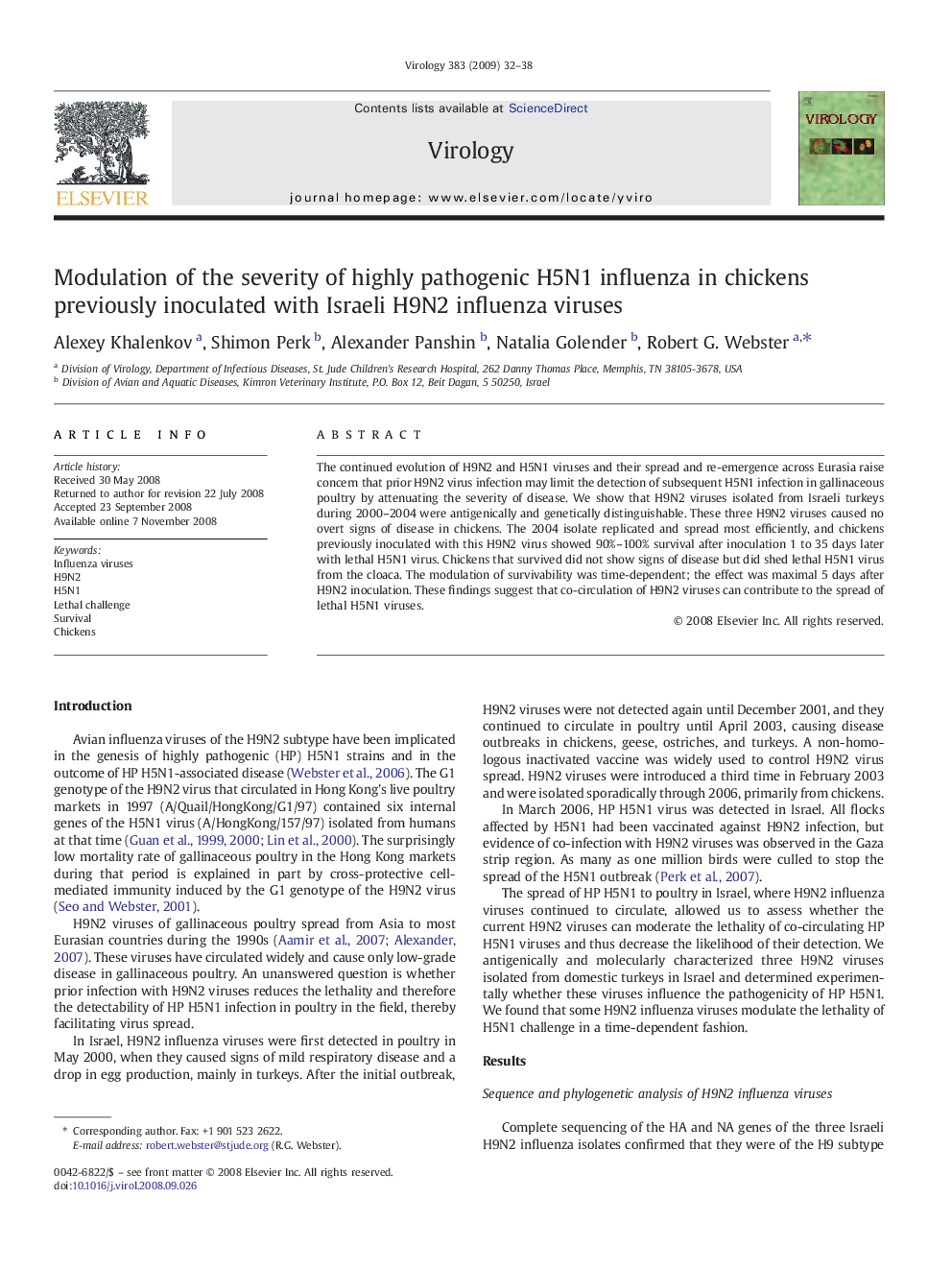| Article ID | Journal | Published Year | Pages | File Type |
|---|---|---|---|---|
| 6141690 | Virology | 2009 | 7 Pages |
Abstract
The continued evolution of H9N2 and H5N1 viruses and their spread and re-emergence across Eurasia raise concern that prior H9N2 virus infection may limit the detection of subsequent H5N1 infection in gallinaceous poultry by attenuating the severity of disease. We show that H9N2 viruses isolated from Israeli turkeys during 2000-2004 were antigenically and genetically distinguishable. These three H9N2 viruses caused no overt signs of disease in chickens. The 2004 isolate replicated and spread most efficiently, and chickens previously inoculated with this H9N2 virus showed 90%-100% survival after inoculation 1 to 35Â days later with lethal H5N1 virus. Chickens that survived did not show signs of disease but did shed lethal H5N1 virus from the cloaca. The modulation of survivability was time-dependent; the effect was maximal 5Â days after H9N2 inoculation. These findings suggest that co-circulation of H9N2 viruses can contribute to the spread of lethal H5N1 viruses.
Related Topics
Life Sciences
Immunology and Microbiology
Virology
Authors
Alexey Khalenkov, Shimon Perk, Alexander Panshin, Natalia Golender, Robert G. Webster,
